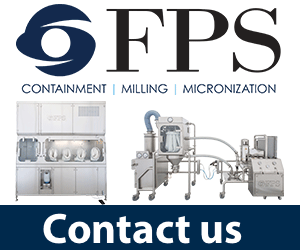Tiny technology, huge potential
Following the completion of a major nanoscience facility at Cambridge University, Clean Room Construction's Steve Lawton looks at nanotechnology and how cleanrooms meet its needs
Nanotechnology is the science of molecule and atom manipulation to produce materials and applications that can be used in both science and technology.
It can encompass precision engineering and electronics, as well as mainstream biomedical applications from gene therapy to drug delivery. Together with microsystem technology, the potential of this technology is limitless, only restricted by man's imagination. All manufactured products are made from atoms and the properties of these products depend on how those atoms are arranged. For example, if the atoms of coal are rearranged, diamonds are produced. Similarly, if the atoms in sand are re-arranged and a few other trace elements added, computer chips can be produced Because the technology has opened up new worlds of possibility, it has spawned a proliferation of new terminology – a kind of "nanospeak" to the uninitiated. This is exemplified by the two fundamentally different approaches to nanotechnology which are graphically termed "top-down" and "bottom-up". Top-down refers to making nanoscale structures by machining and etching techniques, whereas bottom-up, or molecular nanotechnology, applies to building organic and inorganic structures atom-by-atom or molecule-by-molecule. Top-down or bottom-up is a measure of the level of advancement of nanotechnology. As applied today, nanotechnology is still, in the main, at what may be considered the more primitive top-down stage. A breakthrough that may herald the beginning of the bottom-up stage of nanotechnology has been the discovery of spinning molecular structures. These may open the door to realising the "Holy Grail" of power generation and controllable motion at the molecular level, with huge applications for medicine and information technology.
Cleanroom connection Some aspects of nanoscale manufacturing requires cleanroom technology, this can either involve full-scale or "table-top" facilities and will depend on the particular process or industry. Having had previous design and construction experience of microtechnology cleanrooms in the Advanced Technology Institute at the University of Surrey, Clean Room Construction Ltd has just completed one of its most prestigious projects in this sector at Cambridge University. At the new single-storey Nanotechnology Research Building on Cambridge University's West site, the main activity is making individual devices or structures that are only a few nanometres in size and then measuring how they work. Offices for researchers and technical support, together with a small meeting room, have been designed to be set into the side of an earth bank to reduce their visibility from the road. To the west of the office area is a laboratory which is split into a cleanroom facility for manufacturing the nanometre scale devices and structures, plus laboratory space for characterisation of the same. The size of these devices is already smaller than the dust particles in the air. The project included a "state of the art" cleanroom and laboratory facility and has been developed to incorporate associated office space, covering an area of 1300m2. CRC had full design and build responsibility for the cleanrooms and laboratories. The cleanrooms include ISO 14644-1 Class 4, 5 and 7 areas and are arranged on a bay and chase principal with each bay serviced from two adjacent chases. The bays are accessed through a common changing room and linking corridor. There are bays for lithography, optical microscopy and solvent etching, vacuum processing and spinning. The cleanrooms and laboratories have been constructed using CRC's own modular wall and ceiling systems with welded static dissipative vinyl flooring throughout. To assist with the fast track nature of the project, the surface damp proof membrane was applied to the concrete floor slab to enable the finishes to proceed without the normal long drying periods required. The Class 4 highest cleanliness areas are principally within the wet benches which are fitted with integral vertical laminar flow hoods. One of the bays is Class 5 with vertical laminar flow provided by a fan-filter unit ceiling and plenum. The remaining Class 7 areas are conventional flow with terminal hepa filters fed from a central air-handling unit. All areas are individually temperature, humidity and pressure controlled. Energy efficiency was a pre-requisite of the University and the room pressure control system enables any combination of wet bench exhausts to be isolated without affecting the room pressures. The chases are serviced on modular basis with DI water, compressed air, nitrogen, vacuum, extract, process cooling water and towns water to provide maximum flexibility for future use. Vibration transfer is a critical parameter and isolation techniques included isolated equipment bases, high deflection spring mounts for plant, flexible duct and pipe connections to all plant and the use of spring hangers in key identified areas. The laboratory includes general open plan flexible space and laboratory modules. The modules include dedicated areas for tunnelling electron microscopes and scanning electron microscopes. Initial construction on the Cambridge University project began last May and was completed in December.




